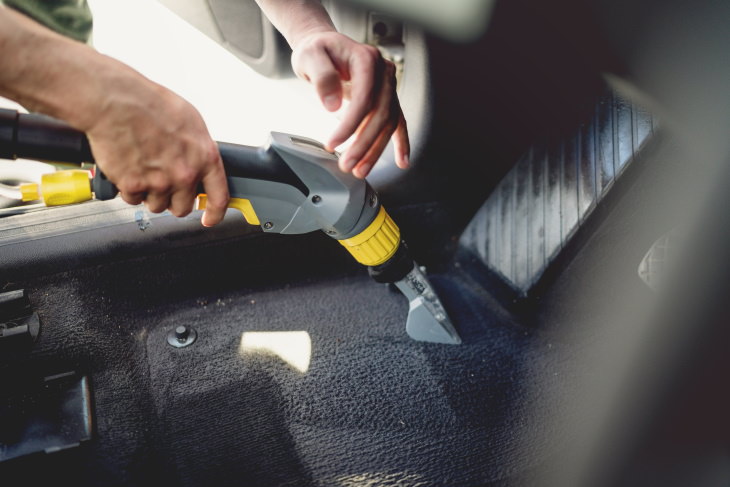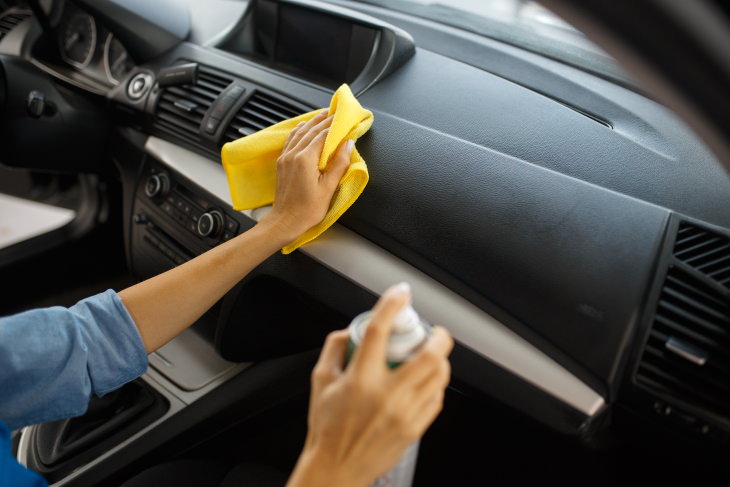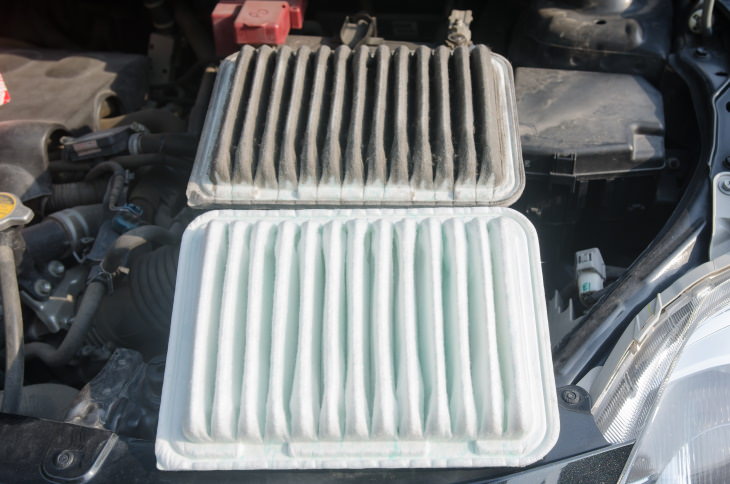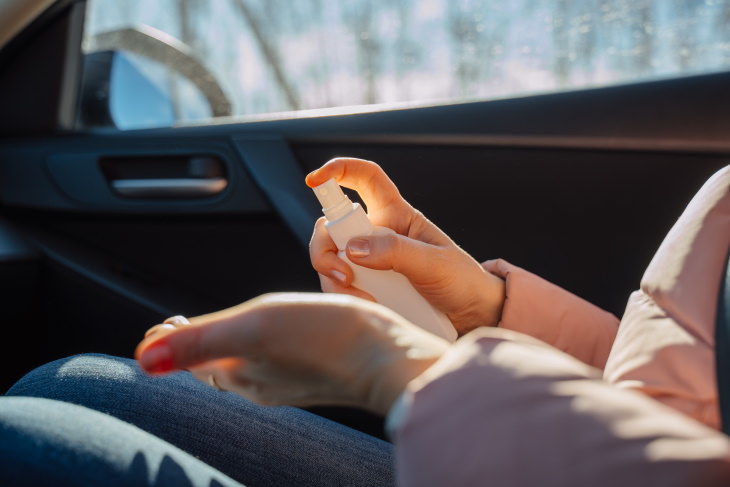1. Vacuum the Car
First things first, clear your car of any unnecessary clutter, such as plastic bags, food, etc. We don't recommend carrying these things into your home, especially if they have been in the car for a long time, unless absolutely necessary. The next step is vacuuming the interior of your car thoroughly to remove any debris, sand, and dirt. This will help prevent the spread of germs in the long run. You don't have to do this step daily.
2. Regularly Clean Commonly Used Surfaces
While disinfecting your car, your goal is to focus on those parts and surfaces of the car that you use the most. These typically include:
- The steering wheel
- Seat belts
- Door handles and car trunk handles
- Dashboard
- Armrests
- Window buttons, turn signals and other buttons
- Air vents.
Think of the surfaces you or other passengers touch the most and make sure to target those specific places when cleaning the car. Clean after every car use if you don't drive much these days, or clean daily if you use the car every day.
3. Which Disinfectants Are Safe for Your Interior?
Cleaning your car and cleaning kitchen counters are two different tasks, and generally speaking, the surfaces in your car, such as plastic, vinyl, leather, textile, and rubber will be less durable than those in your home. That's why we suggest you leave cleaners that contain bleach, hydrogen peroxide and ammonia at home since these can be very harsh and may damage or cause discoloration of car surfaces.
Instead, stick to alcohol-based disinfectants, soap and disinfectant wipes when you're cleaning your car. You can also wet a microfiber cloth with some isopropyl alcohol in a concentration of at least 70% instead of a dedicated cleaning solution. Alcohol, in particular, is the best solution for cleaning interior elements made of plastic, glass, fabric, imitation leather and rubber, and it's often used in vehicle manufacturing as a final interior clean.
Still, using alcohol on leather and touch screens can be quite damaging to the protective coating of the material, so we don't advise using it on those surfaces. You can also clean leather, as well as most car surfaces using soap and water, but don't use these on any electronic components. If in doubt, you can go to your car manufacturer's website and see what they recommend for cleaning various surfaces in the car.
4. Replace Cabin Air Filters
Usually, you should replace the cabin air filter every 15,000 to 25,000 miles, or about once a year. Since the cabin air filter cleans the air of contaminants and germs before letting it into the car, and it can accumulate germs with time, it might be useful to change it in light of the situation. This is especially true if you live in a high-risk area and you drive a lot, or if your work is associated with spending long hours at the wheel, but it's not necessary for those who only use their car occasionally these days.
5. And Don’t Forget About Personal Hygiene
One of the most important aspects of microorganism protection at the wheel is the development of good hygiene habits when driving. Since the main way one will spread germs in the car is dirty hands, make sure to wash your hands, change gloves, or disinfect your hands or gloves right before entering the car.
It's also an excellent idea to keep a bottle of hand sanitizer in the car and use it before you start your journey, after you've topped up gas, etc. When it comes to face masks, doctors don't say it's necessary to wear it if you're driving alone or with the person you're in self-quarantine with as long as the car windows are up. If you're a taxi driver, however, wearing a face mask is safer.
Finally, make sure to wash your hands first thing upon your arrival home, and disinfect your car keys with alcohol on a daily basis or after each use. We hope you found these tips useful. Stay safe!





